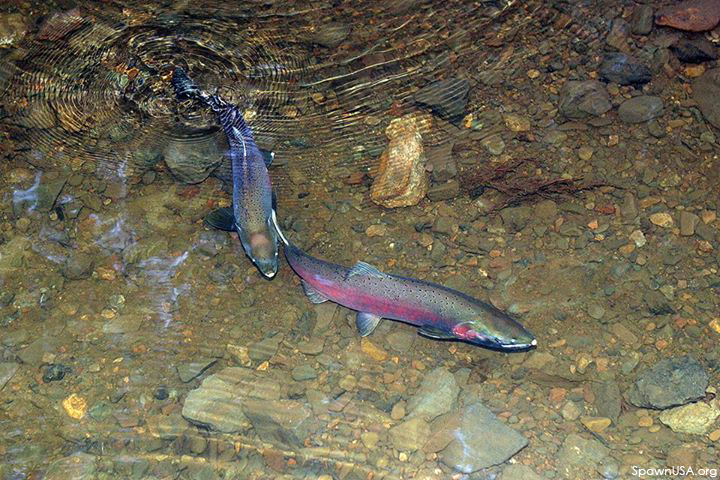New rules under the Endangered Species Act have changed the status of Central California Coast (CCC) coho salmon to the more protective “endangered” status from it previous “threatened” listing.
The review of Endangered Species Act status for all West Coast salmon and steelhead and the new hatchery policy were prompted by a 2001 federal court ruling that required consideration of artificially spawned fish from a hatchery.
An endangered species is considered in imminent danger of extinction, while a threatened species is experiencing serious threats that may eventually lead to its extinction. An endangered listing gives animal species protection under Section 9 of the Endangered Species Act, which prohibits the take of a Federally-listed endangered species.
Take is defined as “to harass, harm, pursue, hunt, shoot, wound, kill, trap, capture, or collect.” Salmon listed as threatened allow NOAA fisheries to authorize some take under Section 4(d) of the Act if it does not significantly increase the likelihood of extinction.
“This ruling for CCC coho underscores the precarious and fragile nature of our local salmon species and the importance of protecting and continuing to restore the Lagunitas Watershed coho,” said Todd Steiner, Director of the Marin based environmental organization SPAWN. “Agencies and NGOs must increase their efforts and work together if we want to leave an environment for our children that can still support healthy salmon populations.”
Paola Bouley, SPAWN’s watershed biologist, said, “The Lagunitas watershed now supports the largest documented population of (CCC) coho salmon in California, yet we have 500 or less females returning to spawn each year. Protecting and restoring creek-side habitat and keeping the water clean makes our community more livable for salmons and humans alike.”
The ruling for other species and population of salmon and steelhead was much more controversial. The decision on Oregon coast coho and 10 populations (Evolutionary Significant Units, ESUs) of steelhead trout was postponed for an additional six months and the “take” rule was amended to exclude hatchery fish released to the wild whose adipose fins are removed. Fourteen of 16 other species listings remained unchanged and lower Columbia River coho provisional “candidate” status was changed to threatened.




